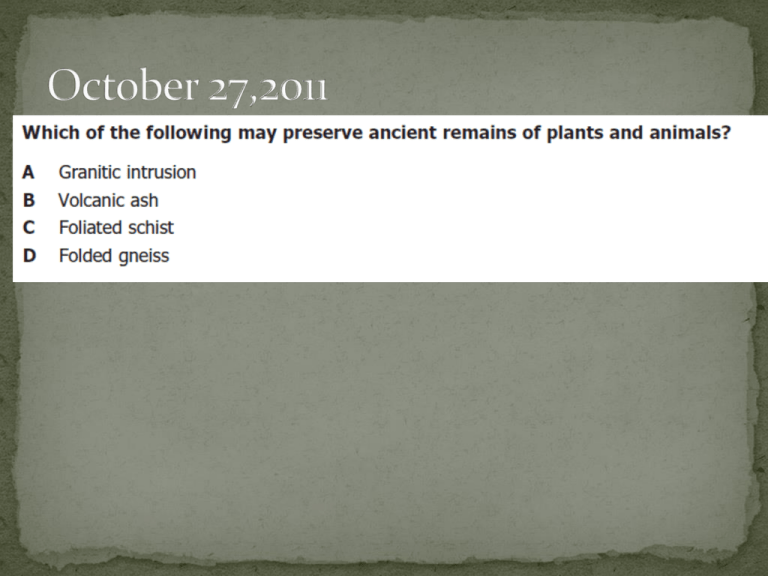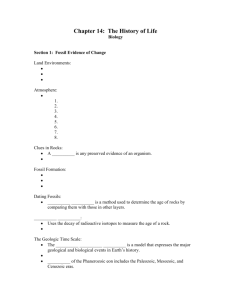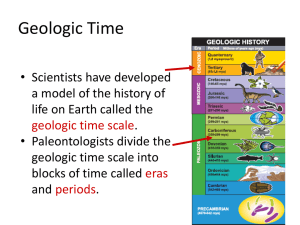Paleozoic Era
advertisement

Objective To learn how the geologic timeline was made and how the length of the various periods are different Agenda Progress reports – need to be signed by Parent/guardian Geologic History Notes Project –highlights Lab: Geologic Timeline Structure of the Time Scale Based on their interpretations of the rock record, geologists have divided Earth’s 4.56billion-year history into units that represent specific amounts of time. Taken together, these time spans make up the geologic time scale. Structure of the Time Scale Eons represent the greatest expanses of time. Eons are divided into eras. Each era is subdivided into periods. Finally, periods are divided into smaller units called epochs. There are three eras within the Phanerozoic eon: the Paleozoic, which means “ancient life,” the Mesozoic, which means “middle life,” and the Cenozoic, which means “recent life.” The Precambrian era lasted from Earth’s formation 4570 until 542 million years ago (mya). The first cells appeared in the Precambrian era. The Paleozoic era lasted from 542 to 251 mya. Paleozoic is a Greek word meaning “ancient life.” Rocks from the Paleozoic Era contain fossils of snails, clams, corals, and trilobites. Animals with backbones began to appear. At the end of this era, the continents that existed during this time period collided to form a new supercontinent, Pangaea. The Mesozoic era lasted from 251 to 65 mya. This era is often called the Age of Reptiles. The Cenozoic era began 65 mya and is still going on. The common name for the Cenozoic Era is the Age of Mammals. Mammals diversified into a variety of species including land mammals, sea mammals, and flying mammals. Cenozoic means “recent life.” Mastadon Ohmdenosaurus Stromatolites Zephyrosaur Apatosaurus (Brontosaurus) Wuerhosaurus Orthoceras Nautiloid Torosaurus latus Eurypterids Elasmosaurus platyurus Trilobites Manny: woolly mammoth Velociraptor Sid: ground sloth (Megalonyx) Chesapecten jeffersonius ( Diego: saber-toothed tiger State Fossil) Carcharodon Megalodon Spinosaurus Cave Bear (Ursus speleaus) Ichthyodectes ctenodon Coelophysis Quagga Giganotosaur (Smilodon) Scrat: saber-toothed squirrel (Leptictidium) Dab: dodo Carl: Embolotherium Frank: Brontotherium








